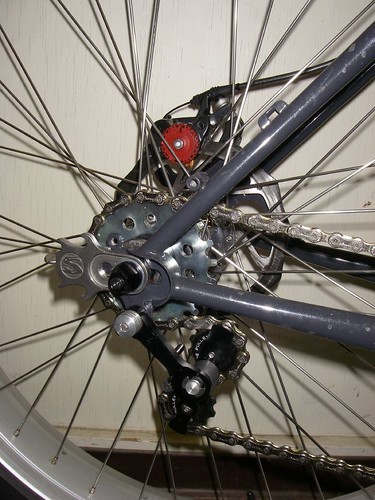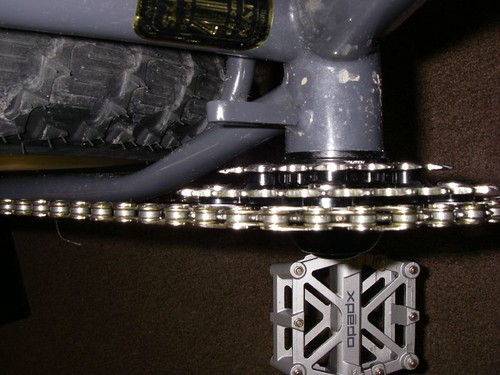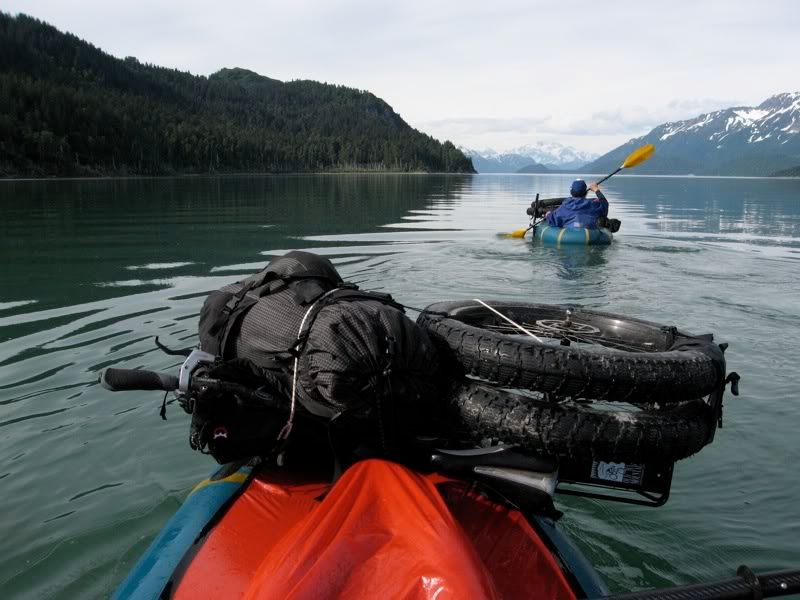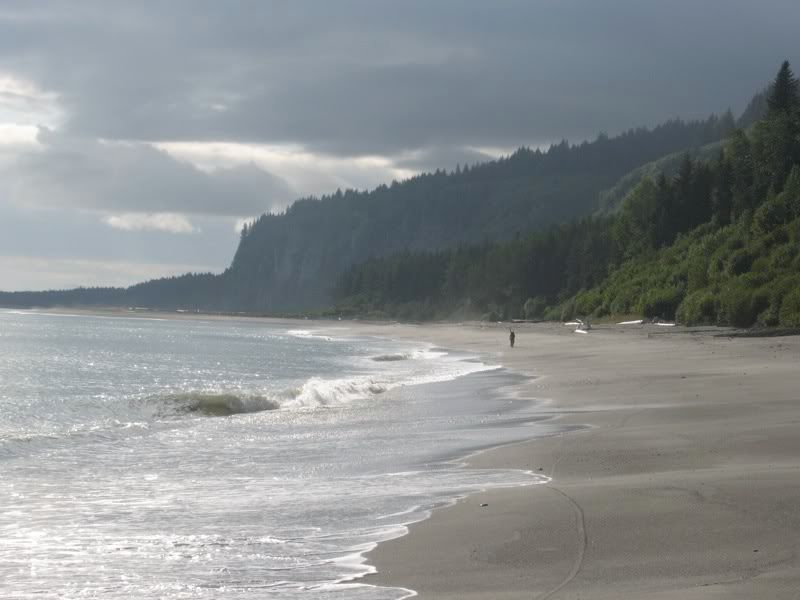

One of the most famous and unique endurance races in the world takes place annually in Alaska. The Iditarod sled dog race was won on March 18, when Alaskan Lance Mackey reached the end of the 1049-mile route from Anchorage to Nome in nine days, 21 hours, 38 minutes and 46 seconds. The last finisher came in nearly six days later.
A separate but similar race pits self-propelled competitors against each other on the same route as the Iditarod. The annual Iditarod Trail Invitational (ITI) is limited to 50 racers, who may choose a mode of travel (bike, ski, or hike) and a race distance (350 miles to McGrath, or 1100 miles to Nome).
VeloNews had the opportunity to talk with ultra-endurance rider Jeff Oatley, winner of this year’s 350-mile ITI, about the equipment needed for the event.
The RaceThe 350-mile ITI begins in Knik, Alaska and follows the Iditarod Trail to McGrath, which took Oatley five days, 19 hours, and 34 minutes this year. As you might imagine, the preparation is unlike that of pretty much any other race out there. Extreme cold, snow, ice, and variable trail conditions place unique demands on both the bike and rider.
The most important concern for any competitor of the ITI is safety, which means readiness for the harshest weather that Alaska can dish out. “The thing about the ITI is that it demands a much larger skill set than any other race I know of,” said Oatley, “It traverses the Alaska Range in the middle of winter, so you have to be prepared to deal with everything that goes along with that.”
While simply surviving the race is essential, getting to the finish line in good time is the goal. With these two priorities in mind, it’s all about finding a balance between functional lightweight travel and packing the right equipment to ensure survival.
Those competing in the ITI are expected to be entirely self sufficient, which means carrying food, water, and sufficient gear for warmth. There are two checkpoints where riders are able to replenish supplies, including food and batteries, which must weigh no more than ten pounds. “The checkpoints are roughly 30 to 80 miles apart and you get warm and eat something in most of them,” said Oatley, “but in some conditions mileage is irrelevant … The stretch from Puntilla Lake to Rohn is about 35 miles but this year it took me 57 hours to cover due to some extremely bad snow conditions.”
“Self sufficiency is paramount,” says Oatley, an avid cyclist who has competed in many of the popular epic races, including the Leadville 100, 24 Hours of Moab, the Colorado Trail Race, solo Race Across America in 2007, and the ITI the last five years in a row.
The BikeOatley chose to use a Speedway Cycles Fatback because the titanium frame weighs less than a Surly Pugsley and features a no-offset design. Using a 165mm Hadley rear hub, the Fatback design allows the rear wheel to be dished to the center, just like a front wheel, yet with no interference between the chain and tire.
Oatley uses Nokon housing because the solid aluminum shells stand up to the cold better than other synthetic cable housing. In extremely cold temperatures, traditional housing loses its malleability, putting it at greater risk of cracking.
Equipment choices like these make sense, but why aero bars for a race that averages about four miles per hour? “Using handlebars to push the bike has resulted in some nerve problems in my right forearm,” said Oatley, “I found that the aerobars provide a very neutral arm position for bike pushing—plus they provide a bomber mounting point for my bivvy system.”
So how much pushing should one expect to do in the ITI? “In a ‘normal’ year you can plan on pushing a bike about 50 to 60 miles,” said Oatley. “This year I probably pushed between 110 and 130 miles.”
In temperatures as low as -40F, common grease and chain lube can begin to work against the rider. “The first absolute imperative is to remove the factory grease from the free wheel mechanism,” said Oatley, “The factory grease will freeze around zero degrees.” Oatley chooses to use arctic-grade Mag 1 grease. “All other lubes can get pretty tight so my race bike has a bottom bracket that I soaked in kerosene to remove as much of the lube as possible.” Oatley also removes the grease from his hubs and replaces it with Mag 1.
For chain lube, Oatley prefers a normal Finish Line Dry Lube. “I carried a small bottle during the race and reapplied it three or four times,” said Oatley.
“Tire pressure is the name of the game in snow riding,” said Oatley. As you can imagine, the pressure required to comfortably ride a 3.7-inch Surly Endomorph is quite low. “During the race this year I started with around 15psi,” said Oatley. “Pretty quickly I dropped that to something less than 10psi… By the end of the race I was probably running 5psi or less.”
A few modifications can go a long way during a 5-day race through Arctic conditions. In an effort to save on weight, Oatley drilled 108 one-inch holes into each of his 36-spoke, 80mm wide Remolino rims, which reduced the overall rim weight by about a third. He also modified his Selle Italia Flight saddle by covering it with a 5mm thick seat cover. The pad provided a good cushion for the nearly six-day race, and also helped as a barrier to the cold.
And in a last minute decision, Oatley decided to replace his six-degree stem with a 17-degree riser stem. With previous back injuries, Oatley said that “a relaxed position is better considering the course record is 4.2 miles-per-hour.”
Simply using the Lake MXZ300 mountain bike shoe is not enough to keep a rider’s feet warm in arctic conditions. Oatley protects his feet by buying shoes about four sizes too large and then wears between three and five socks, including booties. Oatley’s typical sock configuration includes an RBH Designs Vapor Barrier sock, a medium and a heavyweight wool sock, and a waterproof nylon bag.
Even though it seems like a lot for a bike, Oatley said that his bike only weighed about 28.5 pounds and cost just about $3,500 (about $6,500 if you add the gear), not including the labor spent drilling 216 holes into the rims.
Component Highlights:Frame: Speedway Cycles FatbackFork: Speedways Cycles custom steelWheels: Remolino 80mm wide rims; Hadley 165mm rear hub, Chris King 100mm front hubDrivetrain: FSA Carbon Pro Team Issue crankset (22/36/44); Truvativ 100mm ISIS bottom bracket; Shimano E-Type front derailleur, SRAM X0 rear derailleur; SRAM X0 twist shifters; Shimano XTR 11-32 9-speed cassette; Nokon derailleur housingBrakes: Magura Marta SLPedals: Crankbrothers Egg Beater 4TiTires: Surly Endomorph 3.7-inchSaddle: Sella Italia FlightStem: Bontrager 100mm 17-degree rise Grips: Ergon GC-2Aerobars: Profile Design Jammer GTGear Highlights:Shoes: Lake MXZ300Booties: Apocalypse DesignsHeadlight: Lupine WilmaGPS: Garmin eTrex LegendSeatpack: Epic Designs Super TwinkieFramebag: Epic Designs Top tube bag: Epic Designs Gas TankHandlebar bags/hand warmers: Dogwood Designs PogiesGloves: Pearl Izumi Gavia and RBH Designs Vapor Barrier Mitten













